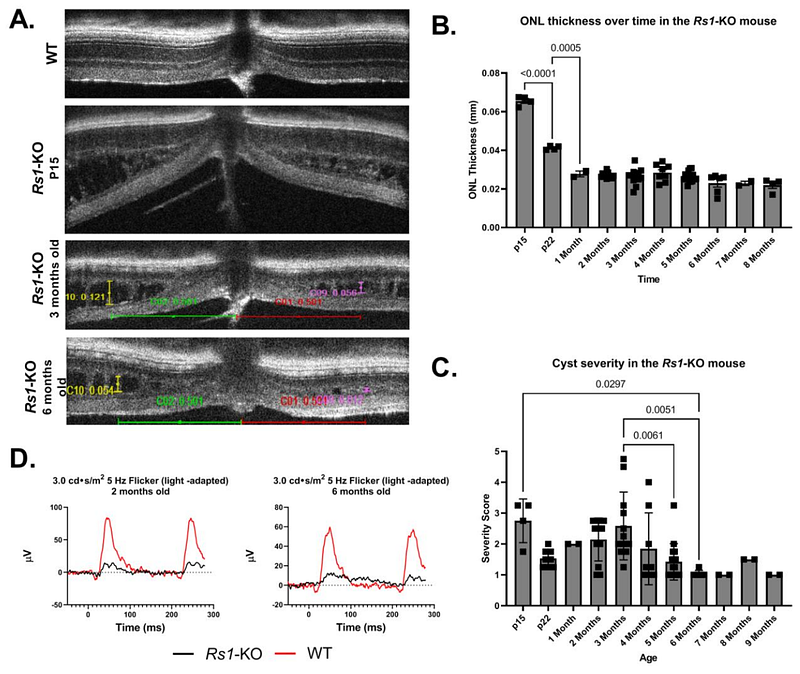An osmolarity dependent mechanism partially ameliorates retinal cysts and rescues cone function in a mouse model of X-linked Retinoschisis.

An osmolarity dependent mechanism partially ameliorates retinal cysts and rescues cone function in a mouse model of X-linked Retinoschisis.
Gehrke, E. J.; Thompson, J.; Kalmanek, E.; Stanley, S. T.; Bhattarai, S.; Lobeck, B.; Mayer, S. K.; Mahoney, A.; Hassan, S.; Hsu, Y.; Drack, A.
AbstractIntroduction X-linked retinoschisis (XLRS) is a vitreoretinal dystrophy caused by RS1 gene mutations which disrupt retinoschisin protein function. A vital protein for maintaining retinal architecture, the absence of functional retinoschisin leads to the development of intraretinal cysts. The preliminary goal of this study was to investigate a low dose gene therapy in Rs1 knockout (Rs1-KO) mice; however, our experiments revealed an unexpected therapeutic effect of a hypertonic buffer, which led to further exploration of this effect. Methods 10 Rs1-KO mice were subretinally injected with an AAV2/4 vector containing the RS1 gene driven by an Ef1a promoter. 16 Rs1-KO mice were subretinally injected with a hypertonic buffer (180 mM NaCl 0.001% F68/PBS (pH 7.4)) or an isotonic buffer (155.2 mM NaCl 0.001% F68/PBS, pH 7.0) as a sham control. Endpoints included electroretinogram (ERG), optical coherence tomography (OCT), and a visually guided swim assay (VGSA). An immunohistochemistry assay was used to quantify cone density in buffer injected and treatment-naive eyes. Results Unexpectedly, hypertonic buffer-injected eyes had significantly reduced cyst severity at 1 month post-injection (MPI) (p=<0.0001), significantly higher amplitudes in cone-dominant ERGs persisting to 5 months post-injection (5 Hz flicker; p=0.0018; 3.0 Flash; p=0.0060) and demonstrated improved navigational vision in the light compared to untreated Rs1-KO eyes (p<0.0001). To investigate the role of tonicity on this effect, an isotonic buffer-injected cohort was created (155.2 mM NaCl 0.001% F68/PBS, pH 7.0) (n=6). Surprisingly, hypertonic buffer-injected eyes exhibited a greater reduction in cyst severity and demonstrated improved cone-dominant ERG metrics over isotonic buffer-injected eyes. Using an immunohistochemistry assay, we demonstrated greater cone density in hypertonic buffer-injected eyes than untreated controls (p=0.0147), suggesting a possible cone preservation mechanism. Moreover, our findings reveal a negative correlation between the peak severity of cysts and long-term cone-dominant ERG metrics, implying that effectively managing cysts could yield enduring benefits for cone function. Discussion/Conclusion This study presents evidence that cyst resolution can be triggered through an osmosis-dependent pathway, and cyst resolution can have long term effects on cone signaling and survival, offering potential insights for the development of novel treatments for patients with XLRS.